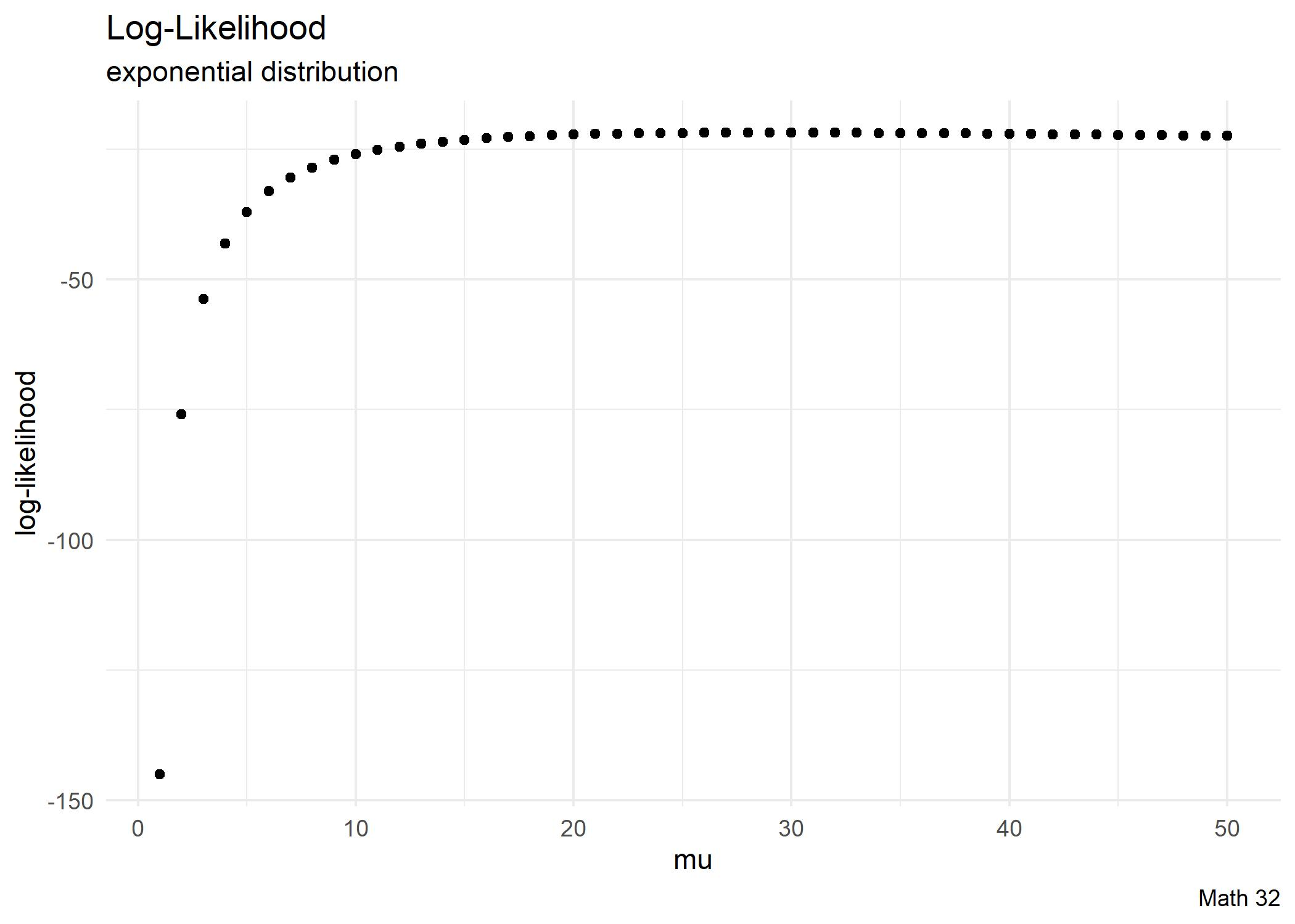Today: Maximum Likelihood
Goal: Modify distribution parameters based on observed data
Objectives:
- derive maximum likelihood estimate for the exponential distribution
- derive maximum likelihood estimate for the Poisson distribution
Notation
Recall,
- Lower-case
- Upper-case
- Treating
- With independence,
- Each individual probability is computed (at least theoretically) with a PDF (probability density function)
Likelihood
::::: {.panel-tabset}
Definition
Let the likelihood function, in terms of a parameter
or
Maximum Likelihood
Given a data set
From calculus, recall that the main step in maximizing the value of a function is setting the first derivative equal to zero.


Given a data set
- Compute the value of rate parameter
- Compute the likelihood at the maximum likelihood estimate (MLE).
- Characterize the top 5 percent of light bulbs.
Given a data set
Estimators Revisited
If we sample from a theoretical
It would follow that the average of the sample maxima underestimates the true maximum
Therefore the sample maximum is a biased estimator of the true maximum.
Similarly, the sample minimum
Therefore the sample min-mum is a biased estimator of the true minumum.
Looking Ahead
Final Exam will be on May 6
